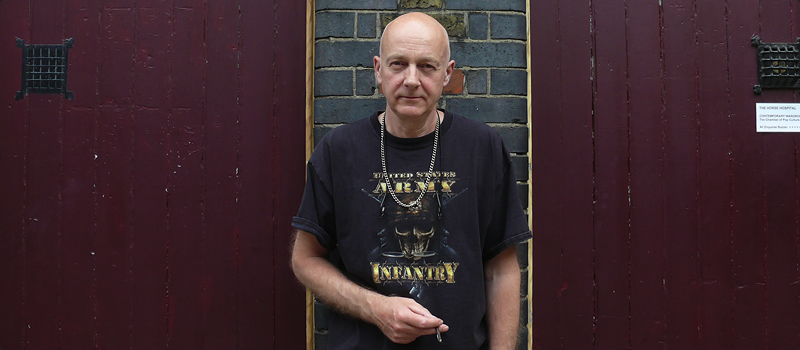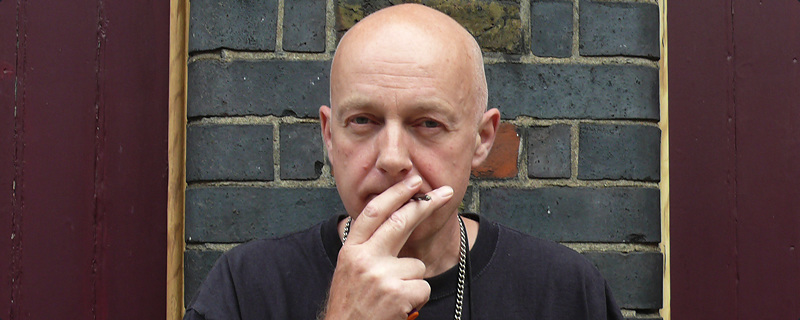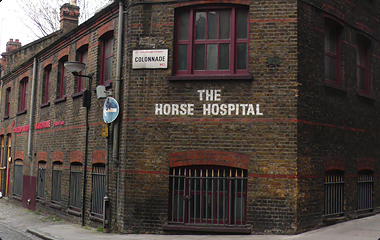STREET WEAR HISTORY
The guard of culture 'Roger K. Burton' talks about
the history of British Youth fashions
08 11/5 UP
Text:Andrew Bunney Translation:Mayumi Horiguchi

'Roger K. Burton' has a lot of titles to his name. He works as a stylist, consultant, costume designer and more. Andrew Bunney who is familiar to us as a honeyee.com blogger visits him to discuss the history of British Youth fashions and how Burton is involved in them.

ROGER K. BURTON
Roger K. Burton is a unique figure in the UK fashion industry. Based out of an ancient horse stables in Bloomsbury, Burton works as an archivist, stylist, consultant and costume designer. He began working in the vintage clothing industry, supplying garments to shops in the UK, Europe and Japan. When approached to provide the outfits for the movie Quadrophenia, he formed the Contemporary Wardrobe Collection, and embarked on a career supplying clothing for film, music and TV. He would later design Vivienne Westwood’s and Malcolm McLaren's Kings Road shop "Worlds End" in 1980, and "Nostalgia Of Mud" in 1982.
The Horse Hospital houses The Contemporary Wardrobe Collection(n.1), compromising of more than fifteen thousand youth culture garments that Burton has collected from the early 1940s to the present day.
n.1: The Contemporary Wardrobe Collection;
London's largest public access collection of British & American vintage street fashion, couture items and accessories. Representing a multitude of diverse youth movements and cult fashions.
- Andrew Bunney( A )
- How did you start working with clothing?
- Roger K. Burton( R )
- In the beginning I had a Collectables stall in Leicester dealing in Art Nouveau and Art Deco things. By 1972 I’d moved onto a shop because I wanted to do furniture, jukeboxes, objects, magazines, all period things. I used to put interesting items of clothing in the shop and gradually the clothes took over from the collectables… I was much more passionate about the clothes anyway.
London dealers would come up to Leicester to buy stuff, and I realised that I could get more money by taking it down to London and going around the various stores. - A :
- Where did the clothing originate?
- R :
- This was all domestic produced – nothing American, not really European, mainly British.
No one was really doing it as a business.
- A :
- What kind of places did you find the clothes at the time?
- R :
- I was looking around the North of England finding deadstock. There were the “Gentlemen’s Outfitters” of which every town had more than one. They had moved along a bit with the times, and fashion being fashion they would always be left with a bit of deadstock which they couldn’t sell because it was the wrong size or style. As a tax write off, rather than throw stuff away, they would chuck it in the cellar or attic and every sale time would bring it out and try and sell it again, cash in hand. A lot of it hadn’t sold as it was too extreme. Teenage stuff was pretty hard to find, old men’s stuff was there - there were always a lot of raincoats and overcoats around, probably because of the weather - but you really treasured teenage stuff.

- A :
- Do you remember any goldmines?
- R :
- There were lots. There was one chain of stores around the country, a kind of surplus store with 90 branches, and over a period of six months I visited everyone with my partner. There was a place run by an old lady in Wigan that was a mixture of second-hand and new, she had five or six shops. Anything from old suits to military to miners cogs – hanging off the front of the shops like grapes. It took a lot of persuading for this old lady to sell stuff in bulk to us, but behind the clothing I could see boxes of new shoes from the 1950s. When we had her confidence we went in and the further back we got, and the higher up we got, the older the clothes got. Eventually on the top floor we found these cartons of Victorian dresses from 1890 that this lady and her husband used to mail order to African states for sixpence a time in the 1930s. Just sat there, museum pieces in boxes.

- A :
- What started your interest in fashion?
- R :
- My first real involvement with clothing was being a Mod in the 60s, which I completely fell in love with and never really got over it. That was my first “love affair” if you like. Growing up on a farm, hearing this new kind of music that appeared - Soul, R+B - and having a very stylish uniform to wear with it was just mind-blowing. Growing up in a country that had never really gotten over the war – everyone wore grey or black or navy.



